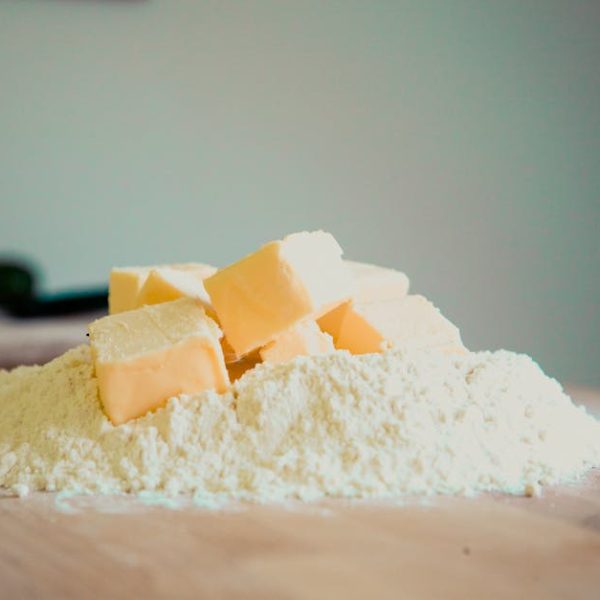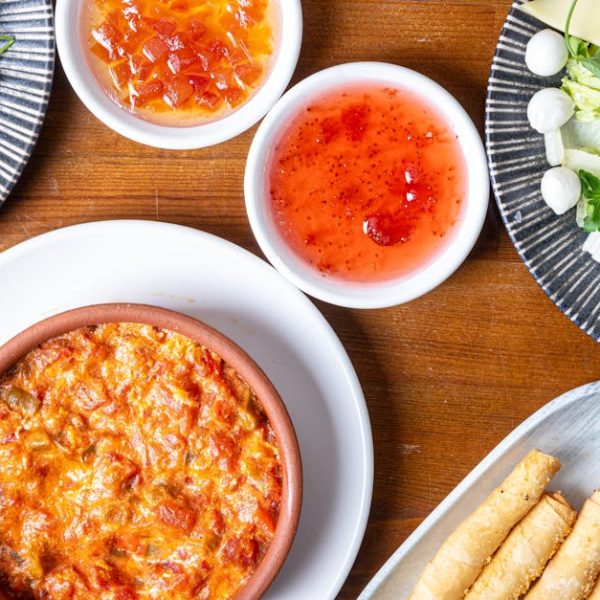One of the best ways to elevate any dish is by adding a dash of heat. If you’re searching for a unique blend of flavor and spice, Habanero peppers are your best bet. With over seven varieties, Habaneros offer both versatility and a distinctively fiery palette. In this article, we’ll explore some of these fiery varieties and how they can be the hidden secret to a memorable culinary experience.
1. Caribbean Red Habanero
First on our list is the remarkably fiery Caribbean Red Habanero. Hailing from the Yucatan Peninsula, this pepper’s vibrant red sheen is just as captivating as its taste. The Caribbean Red delivers an exciting combination of fruity and smoky flavor, complimented by an impressive heat level of 300,000-450,000 Scoville units. Characterized by its small, lantern-like shape, this pepper takes on a deep red hue when fully ripped.
- Spicing Things Up: Caribbean Red Habaneros help bring heat to flavorful dishes like chutneys, salsas, and Caribbean-inspired sauces.
- Best Practices: To ensure the pepper retains its quality, store it in a cool, dry place or refrigerate.
2. Chocolate Habanero
Next up is the Chocolate Habanero, a pepper that packs a punch with its exceptional heat and unique cocoa color. Often mistaken for a sweet treat due to its name and color, this pepper offers an earthy, smoky flavor that carries a Scoville heat rating of 400,000-450,000 units.
- Chocolate Habanero’s Unique Touch: This pepper’s unique flavor depth works wonders in sauces, barbecue marinades, and jerk recipes.
- Comparison: Compared to a regular habanero, the Chocolate Habanero strikes a nice balance between heat and flavor, although some might find it more intense due to its higher Scoville rating.
3. Orange Habanero
Arguably the most recognizable Habanero, the Orange Habanero is known for its fiery heat and fruity, citrus flavor. Originating from the Amazonas region and now commonly grown in Mexico, this pepper has a heat level of 100,000-350,000 Scoville heat units, adding a kick to any spicy recipe it graces.
- Orange Habanero Contests: Although not as hot as the red counterpart, its heat comes close. However, when compared to the Chocolate Habanero, it leans more towards the milder side.
- Orange Habanero in Action: You can add a flavorful twist to your guacamole, salsa, or hot sauce using the Orange Habanero.
This marks the end of the first part of the exploration of Habanero varieties. The next section will delve into Red Savina, Yellow, Ghost Pepper, and Scotch Bonnet Habaneros as well as a bonus Habanero salsa recipe. Stay tuned to discover the spice world of Habaneros and how they could add a zesty twist to your culinary journey.
4. Red Savina Habanero
Let us now venture into the terrain of the Red Savina Habanero – a fiery pepper originating from California. This distinct bell-shaped pepper, recognized for its potent heat and smoky flavor, offers an elevated Scoville rating of 350,000-577,000 units, making it one of the spiciest habanero varieties.
- Red Savina Showdown: While this variety holds a relatively higher heat level than the Chocolate or Orange varieties, its flavor is arguably more complex, making it a hot favorite among spice enthusiasts.
- Red Savina in the Kitchen: Infuse a taste of the Red Savina in your marinades, pickles, and hot sauces for an unforgettable flavoring experience.
5. Yellow Habanero
Let’s dial down the heat a bit and talk about the Yellow Habanero, which adds a colorful dash to your food palette. This South American-originated pepper is relatively milder with a Scoville rating of 100,000-350,000 units. However, don’t mistake its lower spice level as a drawback; its attractive fruity aroma and pleasant heat make it a hit for many.
- Yellow versus Red and Orange: The Yellow Habanero brings a more light-hearted zest and less intense heat compared to its relatives, making it perfect for milder dishes.
- Best Practices for Yellow Habanero: To maximize its longevity, one should dry or freeze the pepper after use.
6. Ghost Pepper Habanero
Now, let us delve into one of the most infamous Habaneros, the Ghost Pepper. Originally from India, the Ghost Pepper Habanero, also known as Bhut Jolokia, boasts an astounding heat level of over 1,000,000 Scoville units! Characterized by its wrinkly texture and fiery taste, this pepper is not for the faint-hearted.
- Ghost Pepper Creations: Despite its extreme heat level, it’s commonly used in spicy curry dishes, sauces, and even spicy cocktails.
- Pro Tips: Always use gloves when handling and use a minimalist approach when adding the Ghost Pepper Habanero to your dishes, lest the overpowering heat drowns all other flavors.
7. Scotch Bonnet Habanero
Last but definitely not least, is the Scotch Bonnet Habanero. Similar in heat level and taste to their Habanero counterparts, these peppers, native to the Caribbean, uniquely resemble a Scottish tam o’ shanter hat, hence the name. With a Scoville ranking of 100,000-350,000 units, Scotch Bonnet brings a pleasing balance of heat and sweet.
- Island Flavor: Scotch Bonnet predominantly features in the Caribbean and Island dishes, including jerk chicken, pepper pot soup, and various hot sauces.
- Scotch Bonnet Showdown: While they are equally hot compared to most Habanero varieties, Scotch Bonnet’s exceptional fruity taste sets it apart.
8. Habanero Salsa Recipe
Finally, as promised, let’s showcase a versatile Habanero salsa recipe that you can tailor with any of the peppers we’ve explored above.
- Step 1: Roast two of your chosen habaneros along with one medium tomato and half a small onion.
- Step 2: Blend the roasted ingredients together with a handful of fresh cilantro, two cloves of garlic, a pinch of salt, and a squeeze of lime.
- The Perfect Pair: This salsa pairs excellently with tacos, grilled fish, or even just with some nacho chips.
As you’ve discovered, Habanero peppers are bursting with potential. Not only can they enhance the flavor of countless dishes but they also bring an unforgettable zest to your culinary creations. Enjoy discovering their unique traits and, most importantly, have fun experimenting with them in your own kitchen!
Key Takeaway:
- Habaneros are versatile peppers offering a blend of distinctive flavors and heat, suitable to elevate a range of dishes.
- Seven varieties were detailed – Caribbean Red, Chocolate, Orange, Red Savina, Yellow, Ghost Pepper, and Scotch Bonnet Habaneros, each bringing a unique palette.
- The variety discussed ranges from the mildly hot Yellow Habanero to the extremely spicy Ghost pepper Habanero.
- The peppers can be used in various ways, including in chutneys, salsas, sauces, marinades, and even in a Habanero salsa recipe shared in the article.
Exploring the world of Habaneros can be exciting. From the smoky Caribbean Red Habaneros to the dauntingly hot Ghost Pepper Habaneros, they offer a universe of flavors waiting to be unraveled. Enjoy the tasty adventure, and remember, with spices, a little goes a long way.
FAQs
Q: How can I decrease the spiciness of a Habanero pepper when cooking?
A: Removing the seeds and white inner ribs of the Habanero pepper can significantly decrease its heat.
Q: Are Habanero peppers the hottest type of peppers?
A: While Habaneros are very hot, they are not the hottest. Other types, like the Carolina Reaper or the Trinidad Scorpion, are considerably hotter.
Q: Can I grow my own Habanero peppers at home?
A: Absolutely, you can grow Habanero peppers at home. They typically require a warm climate and well-drained, fertile soil.
Q: How should I store Habanero peppers to preserve their freshness?
A: Habanero peppers should always be stored in a cool, dry place or refrigerated to ensure they retain their quality.
Q: What is the Scoville scale?
A: The Scoville scale is a measurement of the pungency or spiciness of chili peppers. The scale measures the amount of capsaicin present, a chemical compound that stimulates nerve endings in the skin.
Don’t hesitate to share this innate insight into the world of Habanero peppers and consider exploring other intriguing posts on our website.





